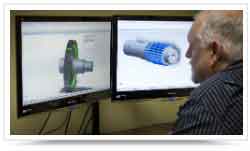In some of our previous posts, we’ve been discussing the amount of noise and vibration that can happen as a result of certain gear manufacturing practices. There is, however, another glaring problem in the field of gear assembly that can lead to reduced life of both parts and machine – gear rattle.
A few of the main components of reducing gear rattle are discussed to great effect in a recent Gear Solutions article reviewing (among other things) internal backlash, centerline control, and end play in a number of extensive tests run at Muncie Transmission to try to reduce rattle in a Class 3 cabs with automatic transmissions:
 “This is a cost-effective means to reduce noise. Accurate CNC equipment, programming, and tooling must be used in manufacturing to hold and repeat tight centerline tolerances. Testing indicated that it is necessary to control internal backlash before moving to the next step. It is important to specify and control internal backlash, but the results show that this had little effect in reducing rattle and noise that is detectible to the human ear. This was an important finding, but this step had the smallest impact on reducing noise of all those we addressed.”
“This is a cost-effective means to reduce noise. Accurate CNC equipment, programming, and tooling must be used in manufacturing to hold and repeat tight centerline tolerances. Testing indicated that it is necessary to control internal backlash before moving to the next step. It is important to specify and control internal backlash, but the results show that this had little effect in reducing rattle and noise that is detectible to the human ear. This was an important finding, but this step had the smallest impact on reducing noise of all those we addressed.”
Another aspect of the study was the concept of drag affecting the noise in a gear train. It was determined that some sort of drag element, by itself, will reduce the amount of noise produced by the gear in question. When they discuss drag, they discuss the many forms it can take, including – tight bearing, excessive hydraulic fuel levels, friction between clutch plates and shaft loads. The conclusion was that noise and rattle remain large customer concerns to this day. For those in our industry, this means balancing noise, rattle and gear efficiency, as well as maintaining an effective cost.
Do you have any questions or comments related to reducing gear rattle? If so, we’d love to hear from you. Contact Us today!






